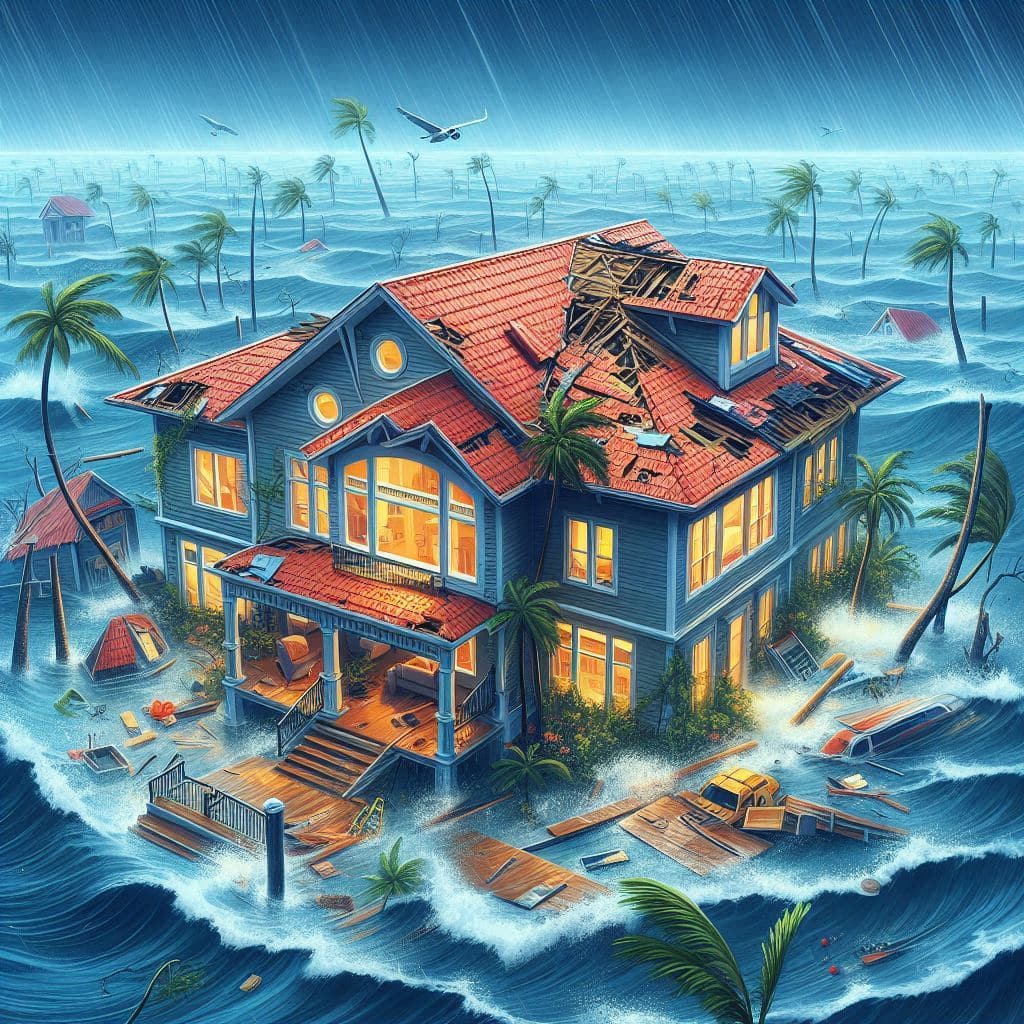Introduction
Hurricanes in Florida can wreak havoc on homes, with roofs often taking the brunt of the damage. Once the storm has passed, it’s crucial to assess and repair any roof damage promptly to prevent further deterioration and ensure the safety of your home. Building on our previous discussions on hurricane preparedness and maintenance, this guide by Pinnacle Roofing Group focuses on identifying and addressing hurricane-related damage to your roof.

Recognizing the Signs of Hurricane Damage
Post-hurricane roof assessment is vital in determining the extent of the damage. Here are key signs that indicate your roof has been compromised:
Missing Shingles or Tiles
High winds can easily lift and remove shingles or tiles. Gaps or bare spots on your roof are clear indicators of wind damage.
Water Damage
Water stains on your ceiling or walls suggest that the storm compromised your roof’s integrity, allowing moisture to seep in. This can lead to mold growth, structural damage, and other serious issues if not addressed promptly.
Granule Loss
Heavy rains and hail can accelerate granule loss on asphalt shingles, diminishing their effectiveness. Check gutters and downspouts for granule accumulation, which can indicate that your shingles are wearing away faster than they should be.
Damaged Flashing
Flashing around vents, skylights, and chimneys is crucial for preventing leaks. Bent or detached flashing needs immediate attention to prevent water from seeping into your home.
Clogged or Damaged Gutters
Gutters direct rainwater away from your roof and foundation. Ensure they are not clogged with debris or detached from the house, as this can cause water to overflow and damage the roof and siding.
Steps to Assess and Mitigate Roof Damage
Safety First
Inspect your roof from the ground if possible. Use binoculars to get a better look at high areas without climbing onto the roof. Avoid walking on the roof, as it may be unstable after a storm.
Document the Damage
Take clear photos of any damage for insurance claims and repair assessments. Include wide shots and close-ups to capture the extent of the damage. This documentation will be crucial for your insurance claims process.
Temporary Fixes
Cover any breaches with a tarp to prevent water from entering your home until professional repairs can be made. Secure the tarp with nails or weighted objects to ensure it stays in place until repairs are completed.
Choosing a Professional for Your Roof Repairs
Licensed and Insured
Ensure the contractor is licensed and insured in Florida. This protects you from liability and ensures quality work. According to the Florida Department of Business & Professional Regulation, hiring licensed contractors ensures compliance with local building codes and standards.

Experience with Storm Damage
Experience in handling post-hurricane repairs is crucial, as these professionals will be more adept at dealing with insurance claims and common issues. The Federal Emergency Management Agency (FEMA) emphasizes the importance of hiring experienced contractors for post-disaster repairs.
Local References
Ask for local references to verify their work quality and reliability in your community. This can be confirmed through platforms like the Better Business Bureau (BBB).
Post-Repair Considerations
After repairs, consider the following to enhance your roof’s resilience:
Upgrade Materials
If you frequently require repairs, consider upgrading to more durable materials that can better withstand future storms. The National Roofing Contractors Association (NRCA) provides guidance on selecting materials suited for severe weather conditions.
Regular Maintenance
Continue regular maintenance routines as discussed in our previous blog posts, and consider scheduling professional inspections at least twice a year. Regular maintenance is endorsed by the Insurance Institute for Business & Home Safety (IBHS) as a key factor in extending the life of your roof.

Conclusion and Call to Action
Repairing your roof after a hurricane is crucial to maintaining the integrity and safety of your home. If you suspect your roof has been damaged, or if you need a professional assessment, Pinnacle Roofing Group is here to help. Send us a photo of your roof through our online form, and our experts will assess the damage and guide you through the necessary precautions and repair options. Don’t wait until the next storm—ensure your roof is repaired, reinforced, and ready for whatever comes next.
References
- Florida Department of Business & Professional Regulation: DBPR Licensing
- Federal Emergency Management Agency (FEMA): FEMA Contractor Tips
- Better Business Bureau (BBB): BBB Contractor Ratings
- National Roofing Contractors Association (NRCA): NRCA Roofing Materials Guide
- Insurance Institute for Business & Home Safety (IBHS): IBHS Roof Maintenance Tips
